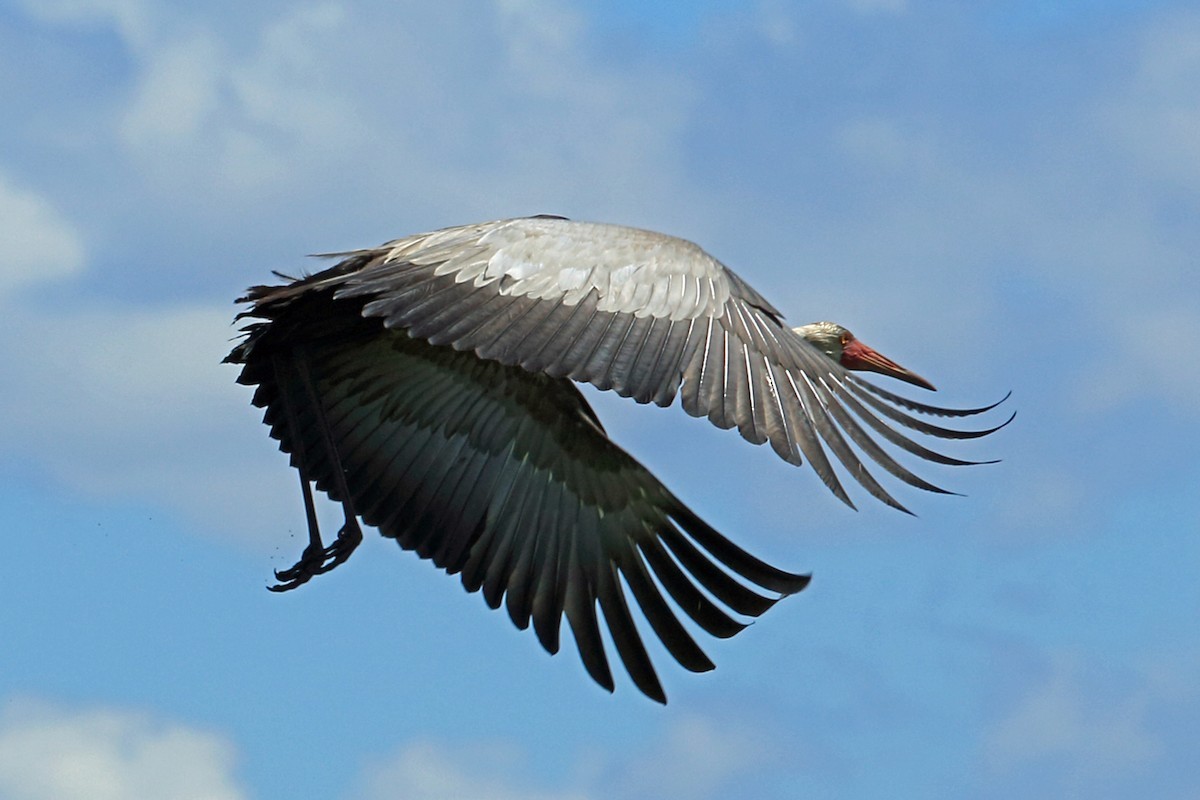Wattled Crane
A species of Crane Scientific name : Grus carunculata Genus : Crane
Wattled Crane, A species of Crane
Botanical name: Grus carunculata
Genus: Crane
Content
Description General Info
 Photo By Nigel Voaden
Photo By Nigel Voaden Description
At a height known to range from 150 to 175 cm (4 ft 11 in to 5 ft 9 in), it is the largest crane in Africa and is the second tallest species of crane in the world, after the sarus crane. It is also the tallest flying bird native to Africa second only among all birds to the two species of ostrich. The wattled crane is taller and, despite the appearance of gracility imparted by its sharp but slim beak and slender neck and legs, is the heaviest on average of several very large, long-legged waders in Africa (i.e. the 2 largest African storks, shoebill, greater flamingo, goliath heron). It is also roughly the fourth heaviest African flying bird after the great white pelican, the much more sexually dimorphic kori bustard and cape vulture. The wingspan is 230–260 cm (7 ft 7 in–8 ft 6 in), the length is typically 110 to 140 cm (3 ft 7 in to 4 ft 7 in) and weight is 6.4–8.28 kg (14.1–18.3 lb) in females and 7.5–9 kg (17–20 lb) in males. Among standard measurements, the wing chord length is 61.3–71.7 cm (24.1–28.2 in), the exposed culmen is 12.4–18.5 cm (4.9–7.3 in) and the tarsus is 23.2–34.2 cm (9.1–13.5 in). Going on standard measurements, it is the second largest proportioned crane after the sarus species, outsizing in these respects even the ostentatiously heavier red-crowned crane. Three adult wattled cranes averaged 8.15 kg (18.0 lb). The back and wings are ashy gray. The feathered portion of the head is dark slate gray above the eyes and on the crown, but is otherwise white, including the wattles, which are almost fully feathered and hang down from under the upper throat. The breast, primaries, secondaries, and tail coverts are black. The secondaries are long and nearly reach the ground. The upper breast and neck are white all the way to the face. The skin in front of the eye extending to the base of the beak and tip of the wattles is red and bare of feathers and covered by small round wart-like bumps. Wattled cranes have long bills and black legs and toes. Males and females are virtually indistinguishable, although males tend to be slightly larger. Juveniles have tawny body plumage, lack the bare skin on the face, and have less prominent wattles. The generation length (in years) is 13. 
Nest Placement
Ground
Feeding Habits
Wattled Crane predominantly consumes tubers and rhizomes of aquatic vegetation, complementing its diet with aquatic insects, snails, amphibians, and snakes. Foraging is mainly in shallow waters, where they actively dig with their bills. Less frequently, wattled Crane consumes grains and seeds.
Habitat
Wattled Crane are particularly associated with expansive wetland ecosystems, including sedge-dominated marshes and riparian floodplains. These habitats often support a mix of shallow water bodies and muddy regions, which are integral for their foraging behavior. The species is adapted to a diet rich in aquatic vegetation, although they may consume animal matter opportunistically. Geographically, wattled Crane occur across various altitudes, with some populations breeding above 2000 meters and descending during non-breeding seasons, inhabiting both inland and coastal wetlands within broader African regions.
Dite type
Omnivorous
General Info
Feeding Habits
Bird food type
Behavior
There does seem to be some seasonal movements in this crane species, but they are not well-known. Movements seem to be dictacted by local water conditions rather than by seasonal temperature variations. During local floods, the number of wattled cranes can increase from almost none to as much as 3,000 individuals. These movements, in pursuit of ideal feeding conditions, seem more opportunistic movement rather than a fixed migration pattern. On the other hand, there has been observed a migration movement from the high to the low plateaus in Mozambique for the species. Somewhat gregarious outsize of the breeding season, flocks of wattled cranes can often include 10 or more birds, occasionally as many as 89 individuals. The crowned cranes occasionally interact with this species but, given those species largely terrestrial foraging patterns, this is uncommon. Two species are known to associate closely with wattled cranes due to shared habitat and dietary preferences: the antelope known as the lechwe and the spur-winged goose, the latter nonetheless usually being found in slightly deeper waters. There is no data on significant predation on the wattled crane, as its size often insures it from being killed. Jackals may be occasional predators of chicks. Wattled cranes commence their breeding season around April. Most nest are sloppily crushed impressions of grass along the border of a marsh. They may use an old spur-winged goose nest or make their own. Eggs are laid approximately 3 weeks after the nests are built. The average clutch size of the species is reportedly the smallest of any of the world's cranes, with an average of 1.6 eggs. Even if there are two eggs, usually only one chick successfully survives to hatch or fledge. The incubation period, roughly 33 to 36 days, is on average the longest of any crane and both parents participate. The chicks are immediately fed by both parents, which take shifts. After around 80 days, the chick(s) start to forage with their parents. At the first sign of any danger, the parents force their young into tall grasses to hide. The fledging period occurs at 100–150 days, the longest it takes any crane to fledge. The young remain with their parents for up to a year (when the next breeding period starts) and may gather in flocks with unrelated juveniles. 
Species Status
VULNERABLE.

 Photo By Nigel Voaden
Photo By Nigel Voaden